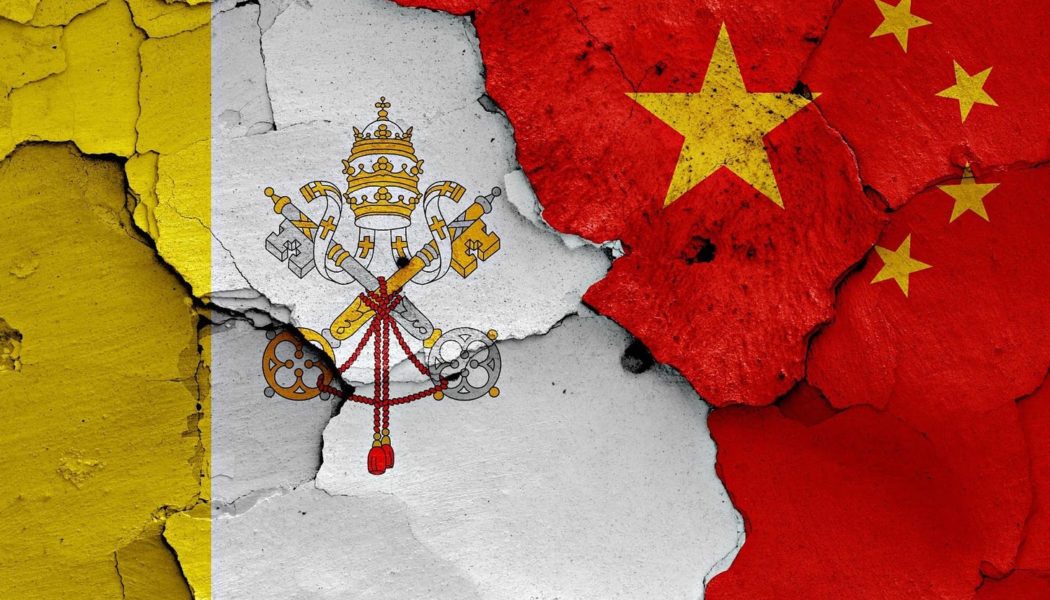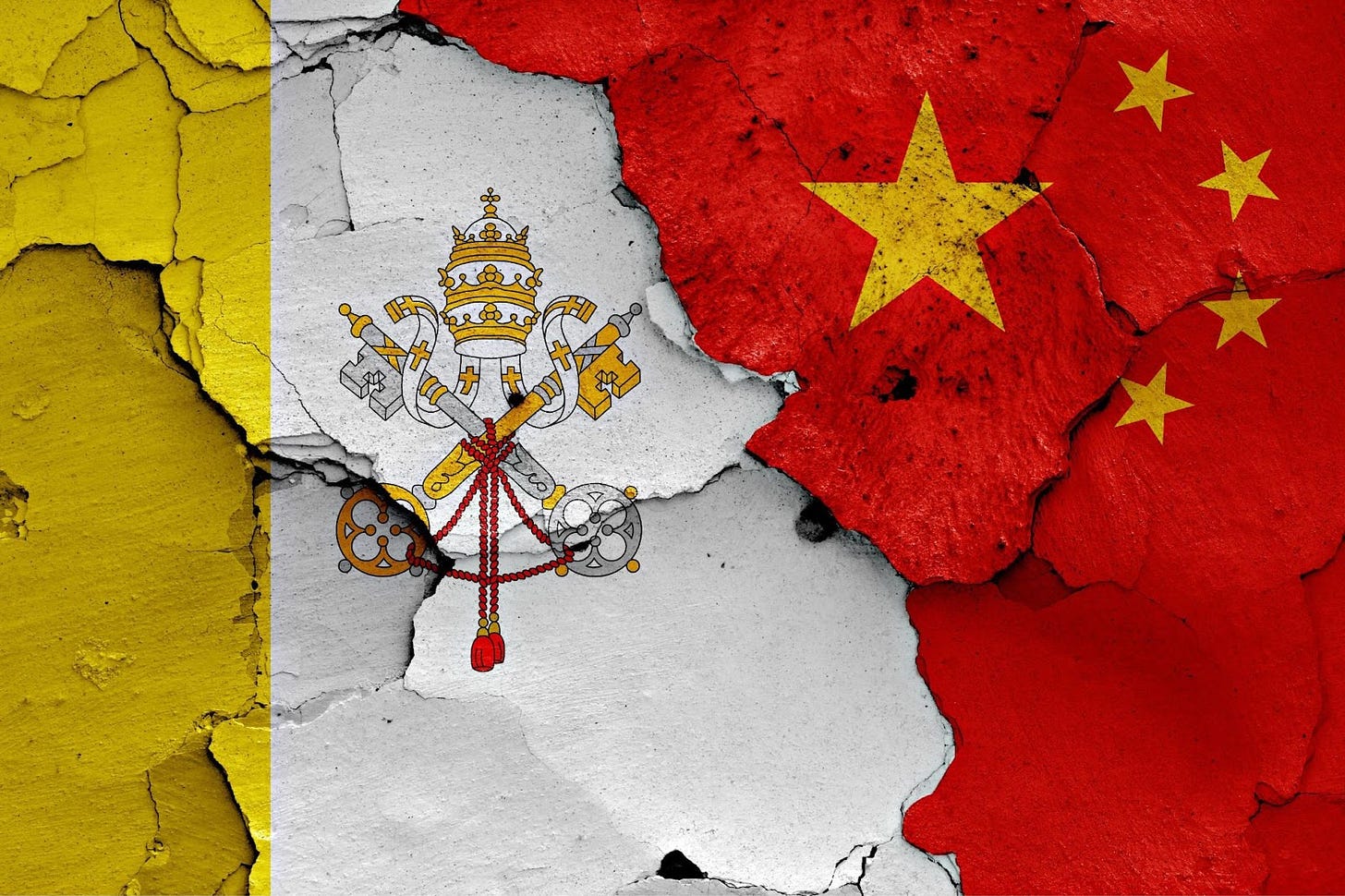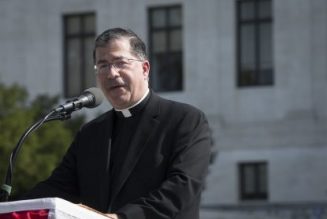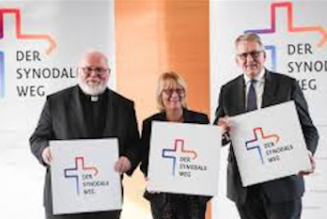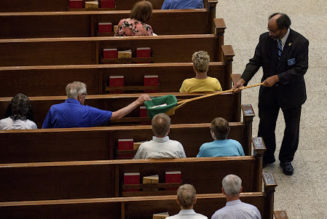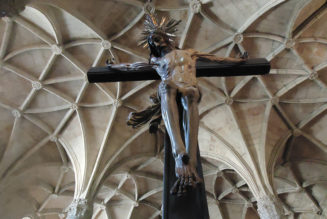Bishop Peter Shao Zhumin of Wenzhou was arrested last week, just days after being released from detention over the Christmas holiday.
Bishop Shao’s arrest was noteworthy, but also part of a long pattern for the bishop, who as a dissenter from the state-controlled Chinese Patriotic Catholic Association has been routinely harassed, detained, and arrested for several years now.
The bishop’s most recent arrest came after he voiced objections to actions taken by a state-appointed diocesan administrator during his Christmas detention — including one move likely to prove an even larger headache for the Vatican than Shao’s arrest.
Fr. Ma Xianshi, a member of the CPCA, was installed to run the diocese over Christmas and set about making a number of changes to the diocese, including the transfer of priests and the redrawing of parish territories.
But, in a letter to Ma, Shao also protested “the unauthorized downgrading of the [neighboring] Diocese of Lishui to parish status under the Diocese of Wenzhou.”
The effective suppression of a diocese without Roman approval is a major departure from the norms of the Vatican’s current agreement with the Chinese government, though it is not the first time the Communist authorities have done so.
With the Vatican-China deal up for renewal this year, the Holy See’s Secretariat of State will have to decide if Beijing’s unilateral redrawing of the ecclesiastical map is a calculated provocation, and how it can respond within its limited diplomatic room to maneuver.
As such moves become more common, however, the Vatican will have to reckon with the emerging divide between the Church in China recognized by Rome, which increasingly exists only on paper, and a different reality on the ground, run by the CPCA.
As the expiration date for the Vatican-China deal gets closer, the “two Chinas” of the Church could end up making what little progress the accord can claim moot — and, unless something changes, its renewal could even become a line under its own ultimate failure.
—
The attempted suppression of the Diocese of Lishui over Christmas did not make international headlines, especially since it came to light in the context of the arrest of Bishop Shao.
Erected in the 1930s, the diocese has been without a recognized bishop for decades, one of several dozen sees which have gone unfilled despite the 2018 Vatican-China deal on episcopal appointments meant to unify the Vatican and state-recognized hierarchies and clear the way for a slew of bishops to be named, acceptable to all sides.
Instead, new nominations have come in a trickle, rather than a torrent, with only a handful being appointed via the approved process of Vatican-Beijing cooperation.
Increasingly, the Chinese government has taken to moving unilaterally, naming and installing bishops without Roman approval, or even their prior knowledge in many cases.
When these appointments began, the Vatican initially sought to downplay the moves, implying there had been a communications error over the timing of announcements. Later, Rome offered what were effectively after-the-fact approval to some of the installations, until finally accepting publicly that they were hearing about new Chinese bishops through media reports.
Alongside that progression, Beijing has also made a number of moves to redraw the ecclesiastical map of mainland diocese — most dramatically by merging several dioceses into one newly created archdiocese, persuading a Vatican-appointed bishop to vacate his see and accept an appointment as an auxiliary bishop in the process.
This development, of Beijing moving to create its own dioceses and extinguish others, often merging smaller, perennially vacant ones in the process, presents Rome with a particular problem.
Dioceses in Western nations have been merging at an accelerated rate, often beginning with Rome uniting the jurisdictions ad personam of a single bishop. Shifting demographics and declining Catholic populations make such moves likely to continue.
Given the historical backlog of vacancies in China, and the lack of progress in naming new bishops, it is perhaps not inexplicable that the CPCA would want to do the same there. But it is unclear if the Vatican has indicated it is not open to doing the same in China as it has done in Italy, the UK and US, or if the Chinese authorities are acting unilaterally as a calculated show of control.
Worse, China could simply not care about Rome’s view of the situation, or the ecclesiastical and ecclesiological complications its moves are creating for the Vatican.
In any event, unlike the nomination of new bishops, there is no mechanism in the Vatican-China deal for the erection or suppression of dioceses, so there is no face-saving option for Rome to deploy by agreeing after the fact.
Nor can the suppression or merging of a diocese be validly done by anyone except the pope — a priest can be validly but illicitly consecrated in China, and installed as de facto head of a diocese pending Roman approval but, simply stated, a diocese does not exist or cease to exist until Rome says it does.
As such, China’s increasing comfort with making its own sees is also compounding the obstacles to Rome clearing legitimate episcopal appointments on the mainland. The Vatican cannot approve a bishop’s nomination or transfer to a diocese it does not recognize as existing in the first place, nor will Beijing approve a bishop being named to a diocese it considers closed.
With the ecclesiastical realities of Rome and Beijing drifting further apart, a situation is again developing where China and the Vatican essentially recognize parallel church structures, dioceses, and bishops — one in communion with Rome and the other answerable to the state, exactly the divide which preceded the Vatican-China deal in 2018 between the underground Church and the CPCA, and which the deal was meant to bridge.
But, ironically, as that divide reopens, neither side seems prepared to walk away from the renewal of the Vatican-China deal, which expires in October — nor is there even much talk on either side of making any serious revisions to it.
While Beijing seems increasingly set on steering Church affairs for itself, without reference to Rome, both sides actually have some incentive to maintain the pretense that the deal is working — or at least can be said to be working to some degree.
For Rome, whatever the problems the Communist government is creating at the level of diocesan governance in some places, the reality on the ground is that there is a kind of normal life ongoing for much of the Church in China, albeit an imperfect one.
There is little to gain for the Vatican in pressing for changes to the current agreement on paper, not least since Beijing has shown itself indifferent to whatever actual norms are agreed. And while private diplomatic protests can be, and no doubt are lodged, there’s no reason to expect anything will come of them.
Meanwhile, walking away from the deal and breaking off relations entirely could cause a widespread government crackdown, as opposed to local pressure on individual bishops and dioceses, and force many mainland bishops to effectively choose sides in a dispute in which the eventual losers would almost certainly be Chinese Catholics.
On the other hand, while the Chinese state seems to enjoy a practical free hand in restructuring the Church on the mainland, it too has at least something to lose by seeing its relations with Rome collapse entirely.
While China is widely viewed from outside as a monolithic society, Xi Xinping has had numerous brushes with popular opposition in recent years as he’s sought to cement his status as president for life. Draconian lockdowns during the latter stages of the coronavirus pandemic triggered widespread civil disobedience in some cities, and harsher economic conditions have triggered waves of middle class unrest.
The Vatican-China deal was agreed in the first place because Xi’s government considers religion in general, and Christianity in particular, to be a potential force for political instability for Communist Party rule. The ability of the government, at the national and local levels, to claim Vatican support for its involvement in Church affairs is not of no value.
Bringing the underground Church above ground and under government oversight was a real priority for the government. Seeing millions of Catholics go back underground in the event of renewed Church-state schism would be a tremendous headache for Beijing, even if it wouldn’t perhaps rise to the level of a national crisis.
Both sides, then, look committed to renewing a deal on paper which bears ever less relation to the reality of the Church in China. But the gap between diplomatic theory and reality on the ground is growing ever wider with every diocese China erects or suppresses.
The emergence of a truly distinct state church, independent of the Vatican not only in how it names bishops but even in the territories of the dioceses to which it names them, cannot be politely ignored forever.
At some point, the Vatican will have to face up to its “two Chinas” problem, and the role its accord with Beijing has played in creating it.
Comments 10
Services Marketplace – Listings, Bookings & Reviews
